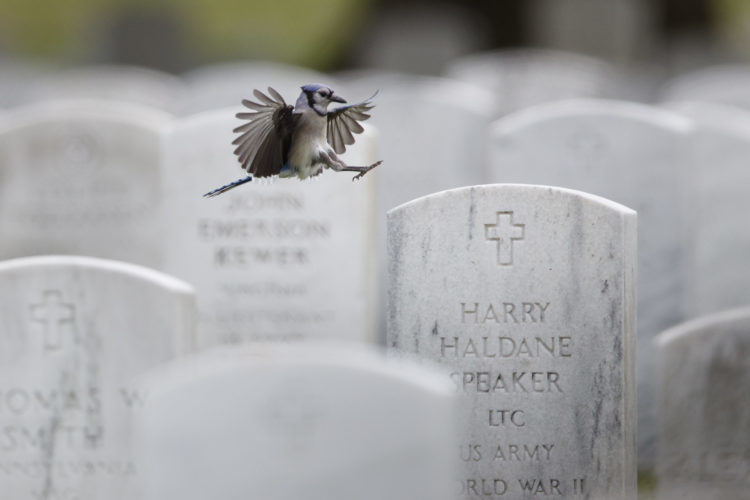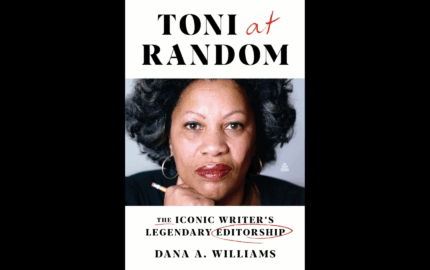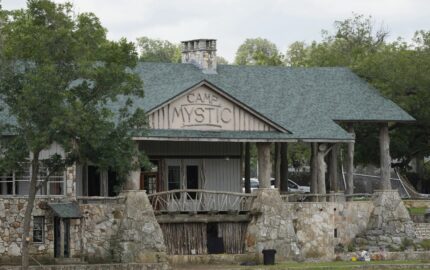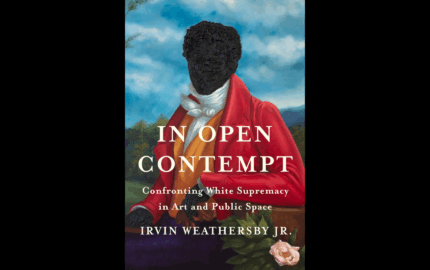The Memorial Day weekend caught me by surprise. After 16 months of no travel, and a schedule dictated only by this weekly newsletter, I lost the daily rhythm of showing up somewhere for work, and the longer rhythms of family rituals and holidays. But late last week when I ventured out, I was confronted with clogged traffic and long lines at the grocery store checkout. The carts ahead of me were filled with beer, hot dogs and potato chips, and all but screamed PICNIC!
Maybe nostalgia — more than is common for me — is also a side-effect of COVID isolation. Today, as I listened to the ritual canon shots from the private club down the hills, I found myself thinking about the Memorial Days of my childhood. Picnics, yes, but not until everyone in my village pinned a crepe paper poppy to their shirt, walked to the big Catholic cemetery at the edge of town and gathered around a veteran's grave. We bowed our heads in prayer and listened as my aunt recited "In Flanders Fields" and my cousin played Taps. Usually, a student from the local school gave a short speech about what Memorial Day meant to them; one year it was me. Then we all stood tall as members of the American Legion Post 337 stepped forward, from various wars and in various fits of uniforms, raised their rifles and fired three times. My father, a veteran of the Pacific theater in World War II, was always one of them until Parkinson's and age left him too weak to lift a rifle skyward. When the ceremony was over, a smaller group drove out to the cozy, non-Catholic cemetery outside town, where my mother's people are buried — my Catholic father now with them — and repeated a more modest version of the ritual. Only then did everyone change into picnic casual and meet up again, first at the Legion Hall and later at the ballpark. It was always a day of community celebration. But it always started with a stretch of reverence.
Similar ceremonies around the country were the stuff of annual coverage during my early career, on newspapers small and big. A reporter — either the newest hire or whoever was on weekend duty — was sent to a cemetery to find a story. It was endured by many as a non-story story — one of those musts that made ambitious young journalists roll their eyes in frustration.
But as I wandered through these memories, and then through a few boxes and my bookshelves, I was struck by how much truly fine journalism has been inspired by Memorial Day — either about the day's ritual itself, or exploring the broader themes it represents. While my musings are based on the American day of honor, I don't know of a nation that doesn't have its own commemoration — which, I guess, says something about the global ubiquity of war.
If you've never been to a military funeral or a local Memorial Day service, I recommend it. I say that not at all as a proponent of war, but as a way to see stories beyond the surface. Notice the generations of veterans gathered and the wars they represent. Wonder about the origins of rifle salutes. Is there an urban-rural divide in such ceremonies or, these days, a red-blue divide? What's the difference between the American Legion and the VFW (Veterans of Foreign Wars)? Is membership in those institutions dwindling and, if so, is anyone picking up the slack? Are cultural rituals themselves dying along with aging vets? Who will tend the small-town graves when the older generations are gone?
So many stories beyond the repeated rituals — stories that tell us where we've been and who we are. My tour through my bookshelves led me, inevitably, to the Internet, where I flagged a few favorites to support my point:
None of these is a Memorial Day story per se. Yet all are Memorial Day stories at heart.
Maybe nostalgia — more than is common for me — is also a side-effect of COVID isolation. Today, as I listened to the ritual canon shots from the private club down the hills, I found myself thinking about the Memorial Days of my childhood. Picnics, yes, but not until everyone in my village pinned a crepe paper poppy to their shirt, walked to the big Catholic cemetery at the edge of town and gathered around a veteran's grave. We bowed our heads in prayer and listened as my aunt recited "In Flanders Fields" and my cousin played Taps. Usually, a student from the local school gave a short speech about what Memorial Day meant to them; one year it was me. Then we all stood tall as members of the American Legion Post 337 stepped forward, from various wars and in various fits of uniforms, raised their rifles and fired three times. My father, a veteran of the Pacific theater in World War II, was always one of them until Parkinson's and age left him too weak to lift a rifle skyward. When the ceremony was over, a smaller group drove out to the cozy, non-Catholic cemetery outside town, where my mother's people are buried — my Catholic father now with them — and repeated a more modest version of the ritual. Only then did everyone change into picnic casual and meet up again, first at the Legion Hall and later at the ballpark. It was always a day of community celebration. But it always started with a stretch of reverence.
Similar ceremonies around the country were the stuff of annual coverage during my early career, on newspapers small and big. A reporter — either the newest hire or whoever was on weekend duty — was sent to a cemetery to find a story. It was endured by many as a non-story story — one of those musts that made ambitious young journalists roll their eyes in frustration.
But as I wandered through these memories, and then through a few boxes and my bookshelves, I was struck by how much truly fine journalism has been inspired by Memorial Day — either about the day's ritual itself, or exploring the broader themes it represents. While my musings are based on the American day of honor, I don't know of a nation that doesn't have its own commemoration — which, I guess, says something about the global ubiquity of war.
If you've never been to a military funeral or a local Memorial Day service, I recommend it. I say that not at all as a proponent of war, but as a way to see stories beyond the surface. Notice the generations of veterans gathered and the wars they represent. Wonder about the origins of rifle salutes. Is there an urban-rural divide in such ceremonies or, these days, a red-blue divide? What's the difference between the American Legion and the VFW (Veterans of Foreign Wars)? Is membership in those institutions dwindling and, if so, is anyone picking up the slack? Are cultural rituals themselves dying along with aging vets? Who will tend the small-town graves when the older generations are gone?
So many stories beyond the repeated rituals — stories that tell us where we've been and who we are. My tour through my bookshelves led me, inevitably, to the Internet, where I flagged a few favorites to support my point:
- The iconic story, by the late New York columnist Jimmy Breslin, about the member of the cemetery grounds crew who dug John F. Kennedy's grave. I consider it must reading for any journalist, student or professional. It is the ultimate example of a zig while the rest of the press zags, and of a niche profile that develops the character of one humble man to tell a much larger story about dignity.
- "A Final Salute" by Jim Sheeler of the now-gone Rocky Mountain News. Sheeler won the 2006 Pulitzer Prize in Feature Writing for a narrative series that followed a Marine major whose assignment was "casualty notification" — delivering the news to families of loved ones killed in Iraq. Sheeler's partner, photographer Todd Heisler, also won a Pulitzer that year for the visual version of the story. If you haven't come across this project before, take time with it, either in the newspaper archives or in the book it inspired.
- Go back a bit in history and read "Once There Was a War" by John Steinbeck. His frequent, short dispatches from the front were edited by the censors, but still reveal a master of observation at work.
- Consider "The Good Soldiers," by Pulitzer winner David Finkel of The Washington Post, and its sequel, "Thank You for Your Service." Finkel embedded with an infantry battalion on the front lines in Baghdad during the 2007 surge, and then embeds back in the U.S. with soldiers trying to recover from physical and emotional trauma.
- And, of course, "The Things They Carried," by Tim O'Brien. It's part novel, part memoir and part war reporting inspired by O'Brien's time in the Vietnam War. Amazon put it on the "List of 100 Books to Read in a Lifetime." (I bristle at a lot that Amazon does, but I'm with them on this one.) Other awards, including finalists for the Pulitzer Prize and National Book Critic Circle Awards, are too many to mention. I taught from the first chapter of the book every semester for 17 years, not because it's about war, but because the writing teaches me more about the possibilities of writing every time I turn a page. And yes, it makes me think about war and what we ask of those who face it.
None of these is a Memorial Day story per se. Yet all are Memorial Day stories at heart.



